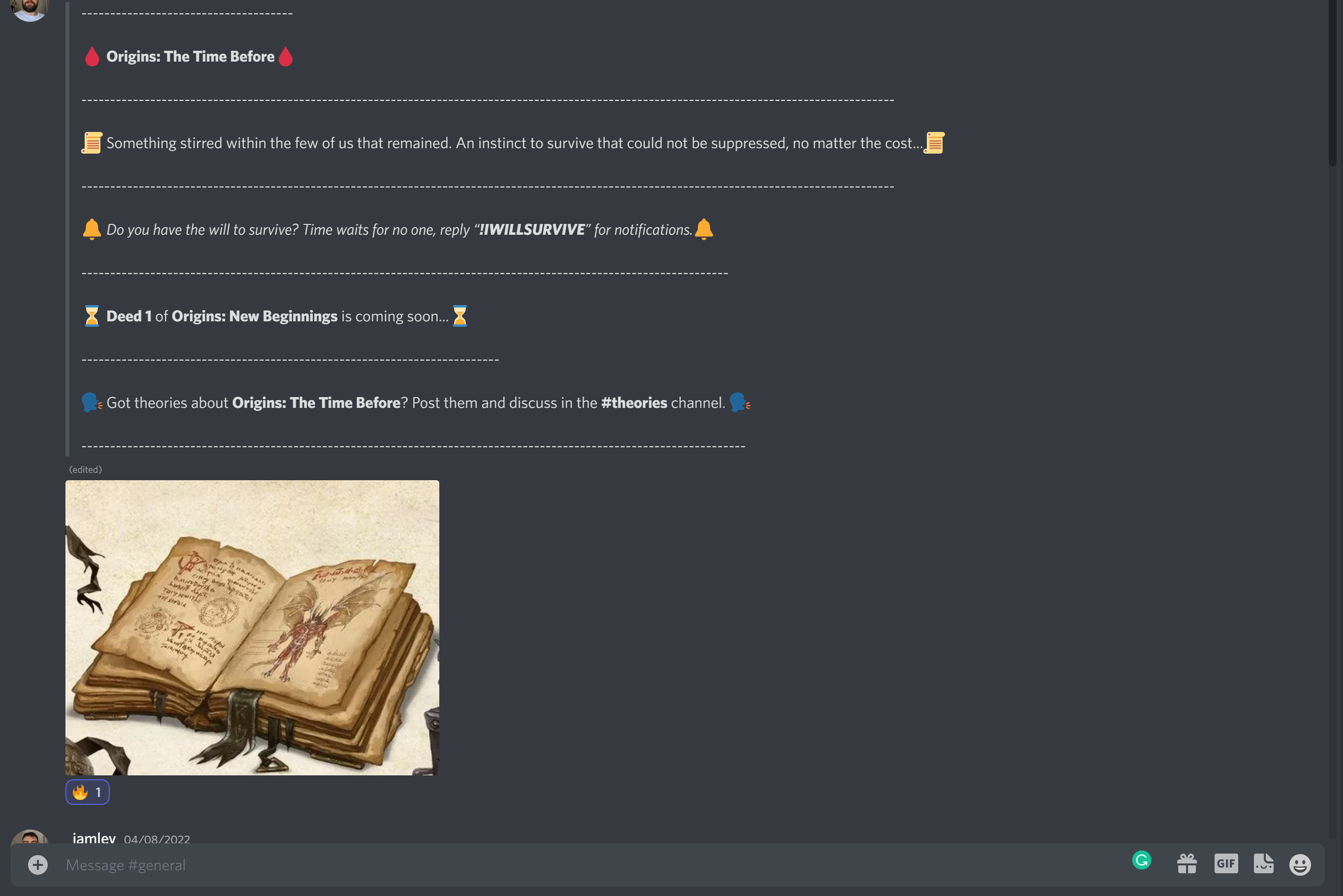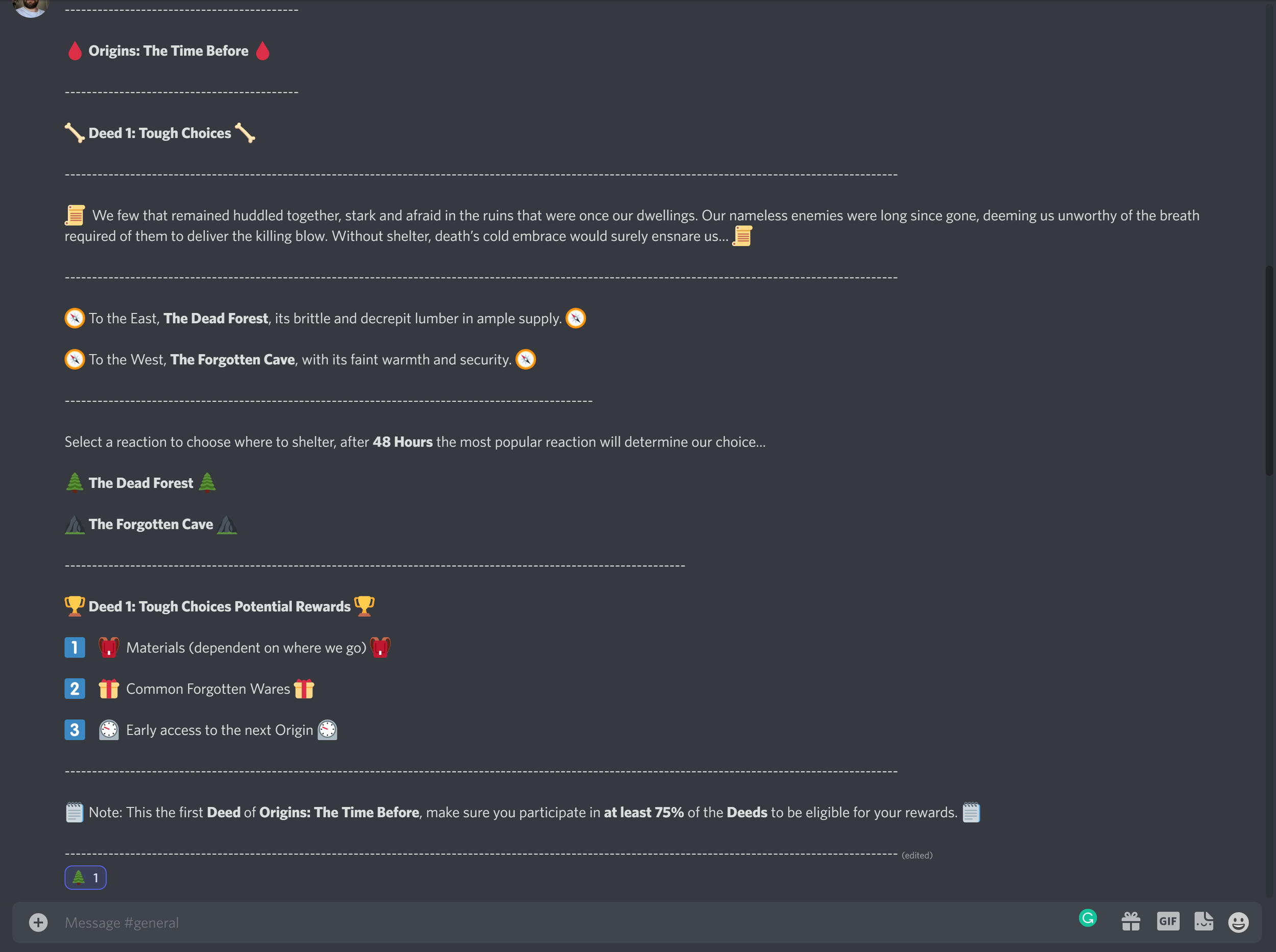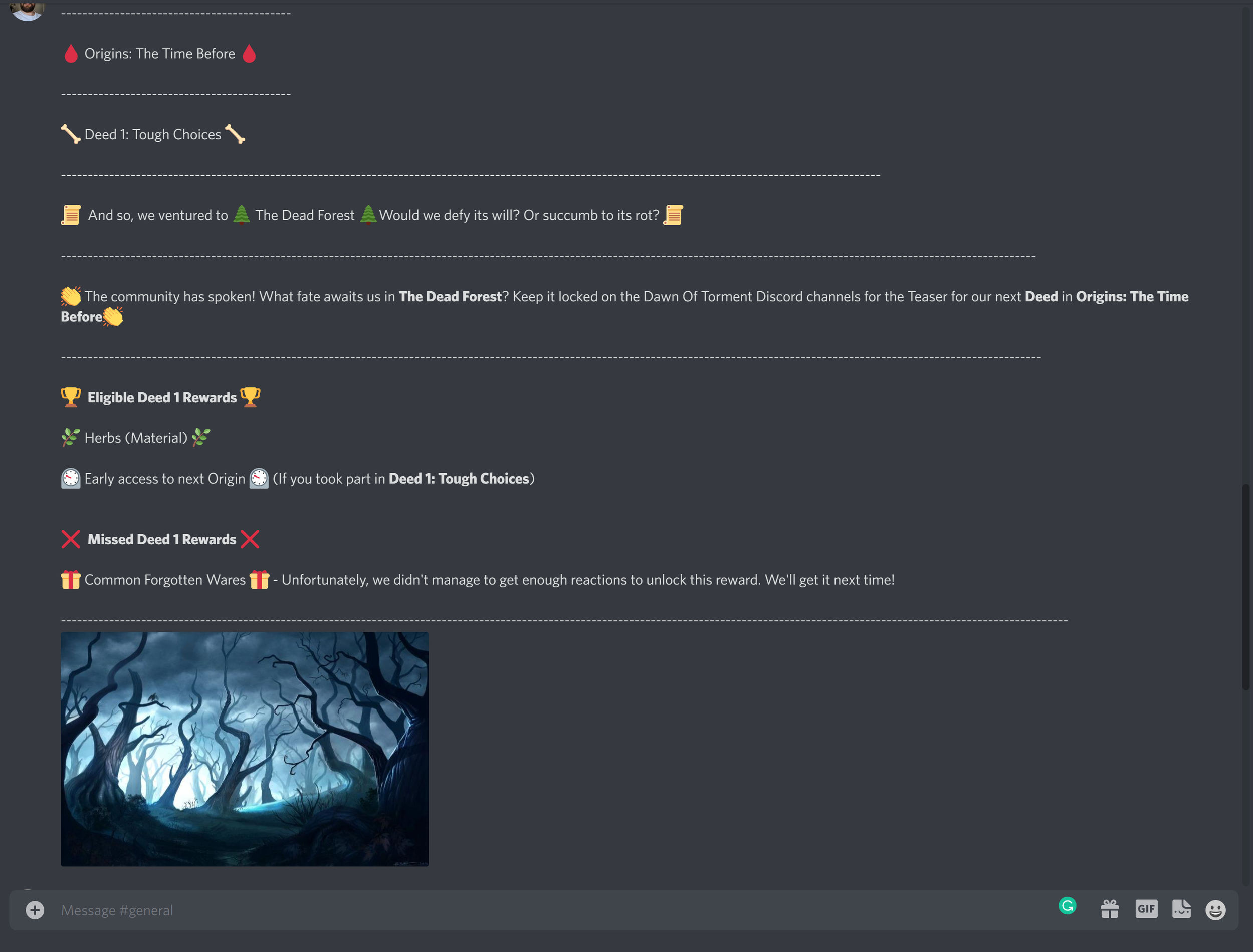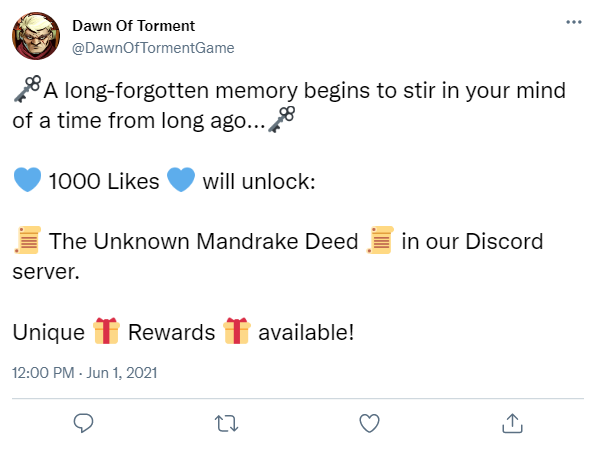dawn of torment
summary
A grimdark online survival arena game with examples of:
- Lore writing
- Community-driven story writing
- In-game text descriptions
project Overview
Having previously worked with Khaled (Paragon’s Creative Director) on Warfronts: Battle For Toria, I was brought onto Dawn Of Torment in the very early stages of development. Initially, I was brought on to establish the tone, lore and world of the IP. My role developed to involve consultation on various game design elements, which led to me writing and redrafting much of the game’s white paper (including descriptions for art concepts and UI mock-ups).
With the developers seeking investment for the project, I also wrote copy and consulted on social media engagement strategy from a narrative perspective to continue to develop the IP.
Lore and worldbuilding
My general brief was to design a post-apocalyptic fantasy world that was an amalgamation of Middle Ages Central Europe and Renaissance cultures. Unlike with Warfronts, we were aiming for more of a “grimdark” tone, taking inspiration from franchises such as Warhammer, Dark Souls and Diablo.
I developed a story synopsis of the events that took place prior to the current world state:
-
“Let our mission be known to all. From forgotten flats of ash and dust to oldest oak of thickest woodland — all that is and all that is yet to be observed will bear the mark of House Mandrake. The peoples of the bygone world will relinquish their superstitions and set aside their meaningless feuds in service of our great house. With the purging of their necromantic charlatans and our supreme guidance, they will wriggle free from the clutches of ignorance, and on their backs, we will build a world of science and reason — tended to by their progeny and ruled over by our dynasty for eternity. We lay claim this land, the land of Ascendancy.”
-
Versed in the ancient ways of blood and bargain, the Necromancers once led the disparate tribes of the divided world, demanding offerings of flesh in return for good fortune. With the rise of Mandrake, the peoples turned away from the ancient ways, tempted by the assurance of knowledge and wealth they believed would come from gaining the great house’s favor. To shun the Necromancers, once unthinkable, had become the norm. Sensing the shift in public opinion, House Mandrake instigated a purge against all practitioners of the necromantic way. With their once sizable followings diminished, the Necromancers were no match for the Mandrake’s might. The few that survived the purge fled to the furthest reaches of Ascendancy to live as nomads.
With their expulsion, House Mandrake would take all the world had to offer and bring doom to any subjects who were unable to facilitate the increasing demands required in the relentless expansion of their dominion. They toiled in the service of a neverending line of Dukes, Earls, and Lords, to whom the natural world was dispensed.
-
Some believed the Great Plague was born of a curse whispered by countless Necromancers as their bodies were immolated on the pyre, others that it was nature enacting the Law Of Balance to protect herself from the oblivion that would come from endless industrial expansion. The Great Plague would bewilder the wisest of the Mandrake bloodline for the remainder of their short lives.
Just as the technology of industry had allowed for the fast travel of human labor, it facilitated the rampaging spread of the Great Plague over every corner of Ascendancy.
In a twisted act of cosmic ridicule, the Great Plague was especially adept in wreaking havoc on the delicate bodies of those of noble stock. In Mandrake tradition, exposure to the sun was seen as lowly. Confined to their great halls and libraries, the plague annihilated their already weak physiological systems.
Within a year, the Mandrake bloodline had ended — extinct before the food in their larders even had time to spoil, a legacy told in pristine statues and books undisturbed by dust.
concepting
One of the main goals of the White Paper was to help potential players and investors visualise the game. It was important that these images created excitement for the IP and really sold the aesthetic and tone we were aiming for. I worked closely with the Creative Director and Art Lead to provide descriptions and reference material for the creation of a whole host of concept images and key art.
soulless mercenary
A dark swamp/marsh clearing, white-blue illumination from a huge full moon (partially obscured by the twisted branches of a dead tree).
Standing atop a pile of monster corpses (three to five, various sizes) – Our Soulless Mercenary. He stands idle, confident with his greatsword behind his back as he’s barely exerted himself.
Unlike the other Mercenaries we’ve seen, much of his face is hidden by a large imposing metal helmet, through gaps in the helmet his eyes glow and ripple with blue flames. His armor is more impressive than the other mercenaries, with better craftsmanship, but not overtly “pretty” or “ornate” – (still a “survival” element with furs/hides/bones) – tough and functional. The arm that’s holding the greatsword is only partially covered by armor, revealing some muscular but rotten flesh beneath it. Subtle blue “veins” ripple through the armor and the Mercenary’s exposed flesh as if it’s somehow “corrupted”.
In the distance, a regular mercenary backs away from him, scared and out of his depth – no match for him.
visual references
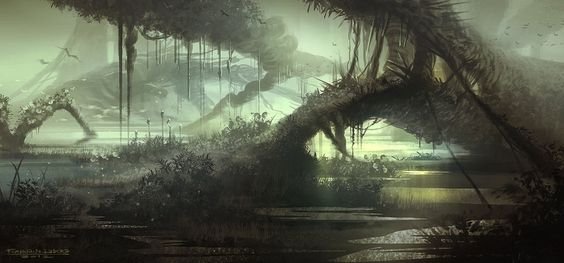
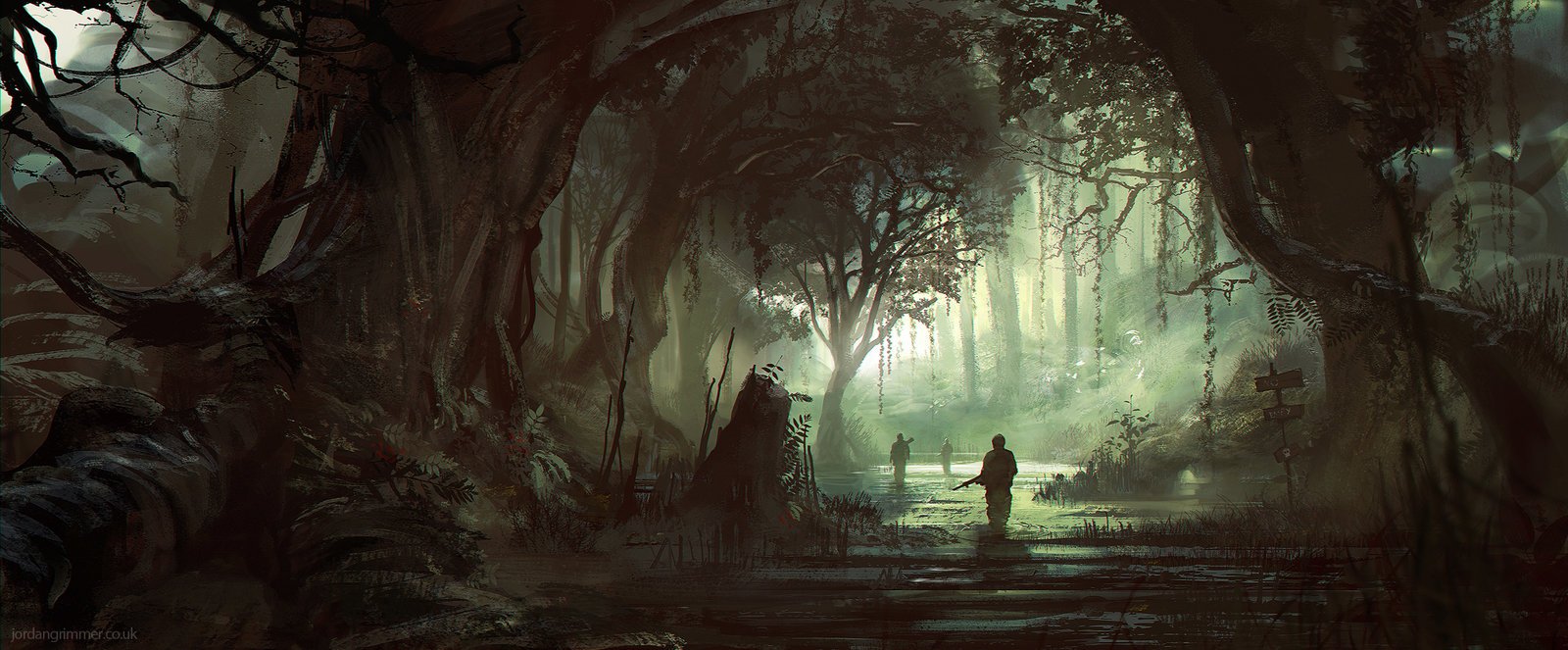
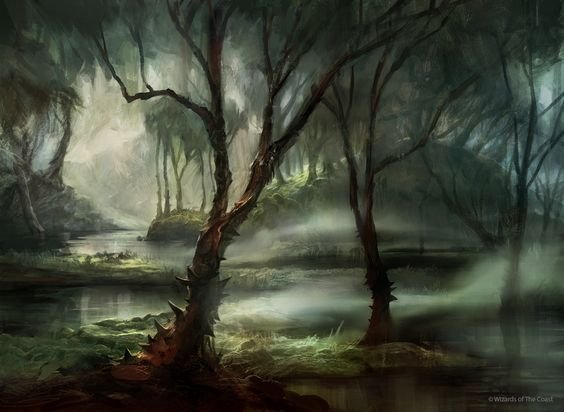
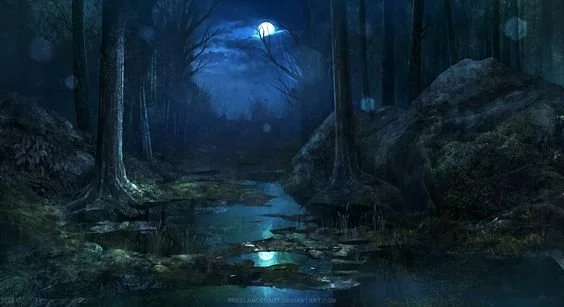
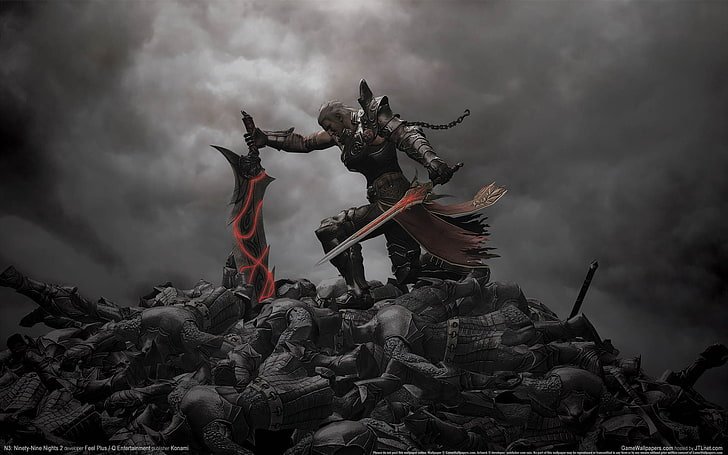
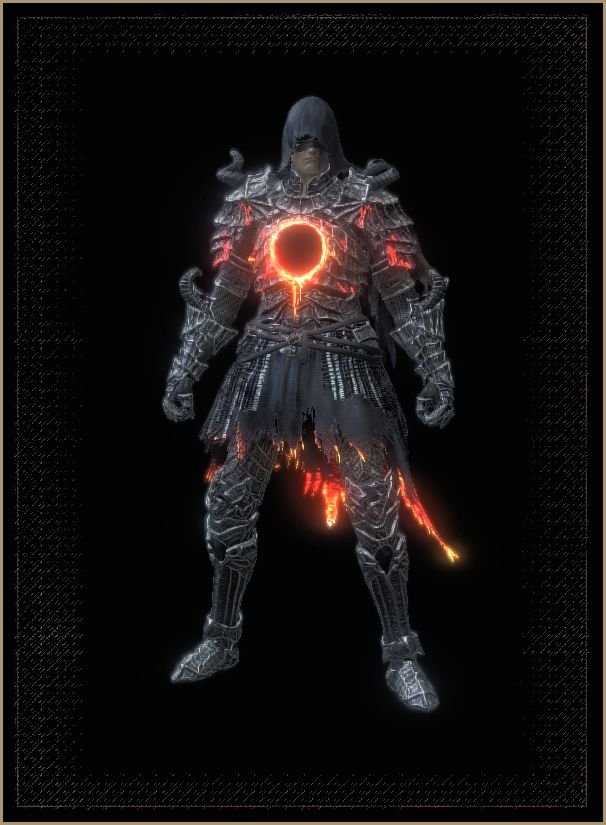
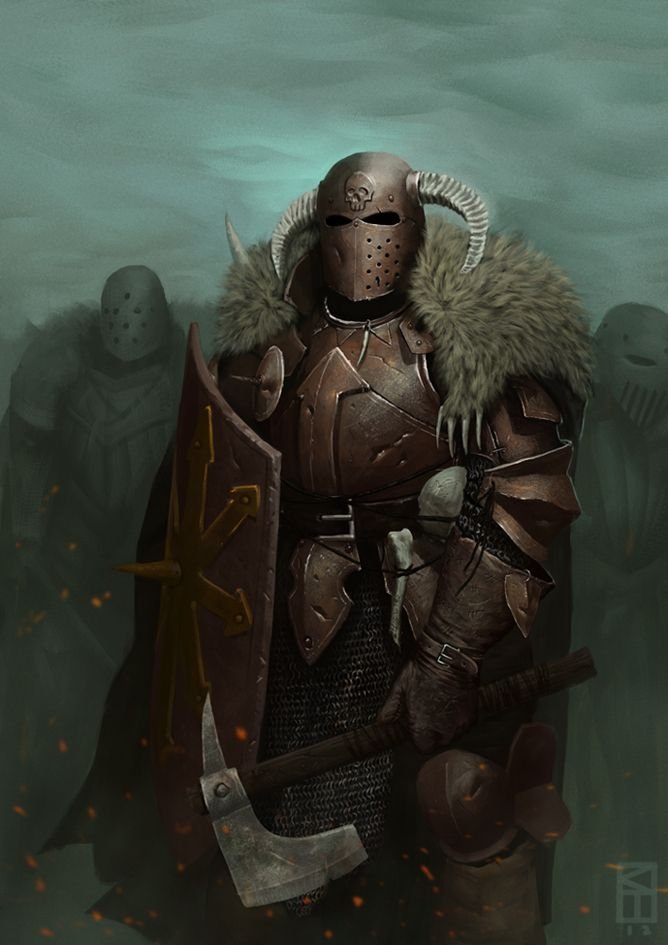
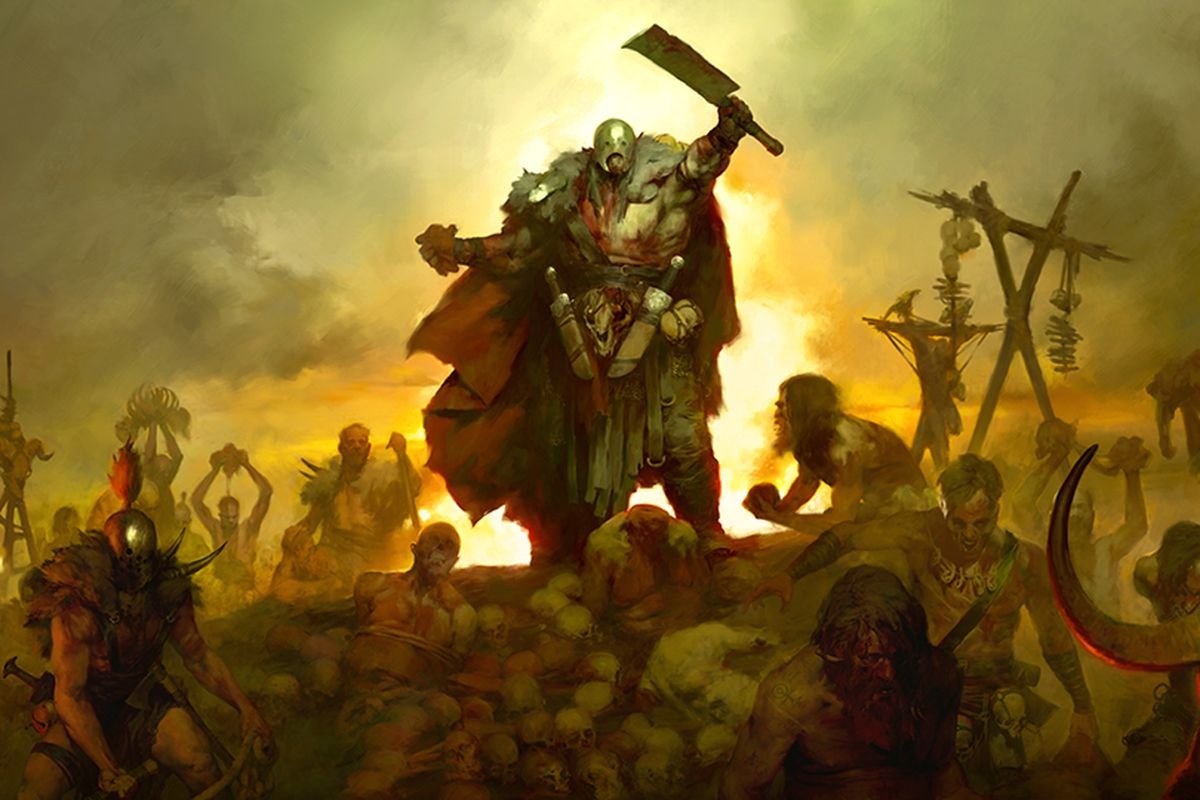
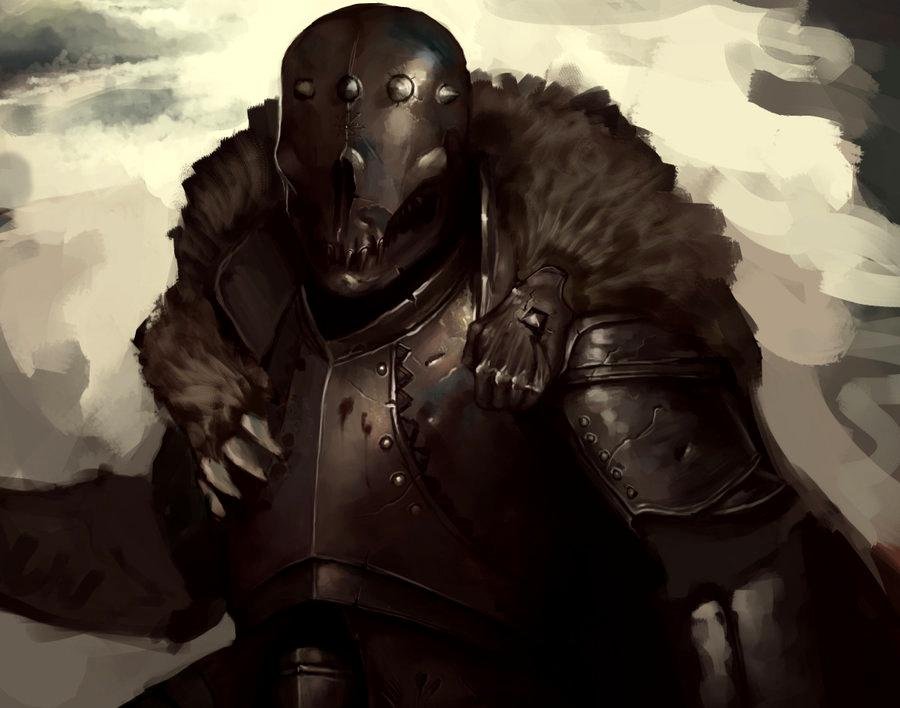
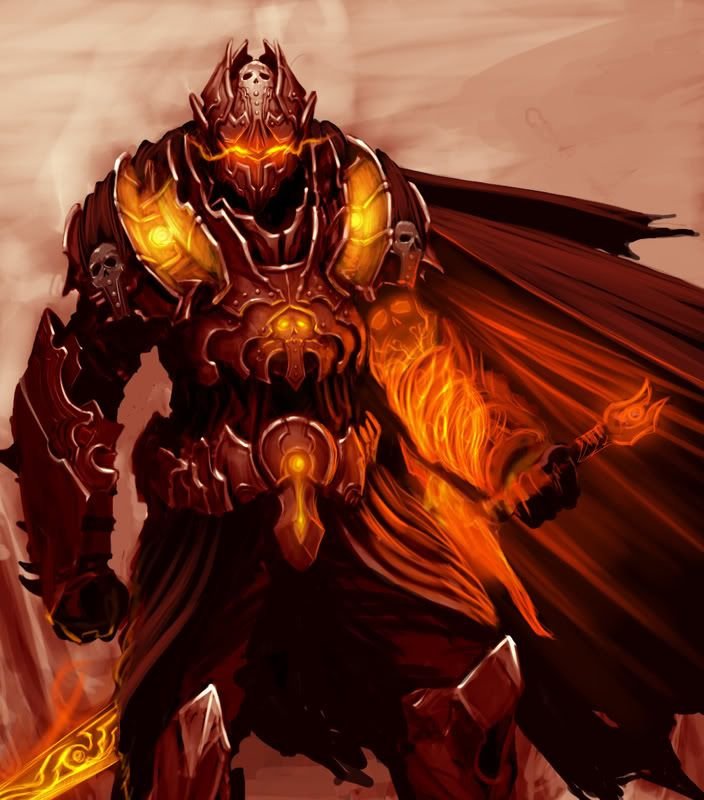
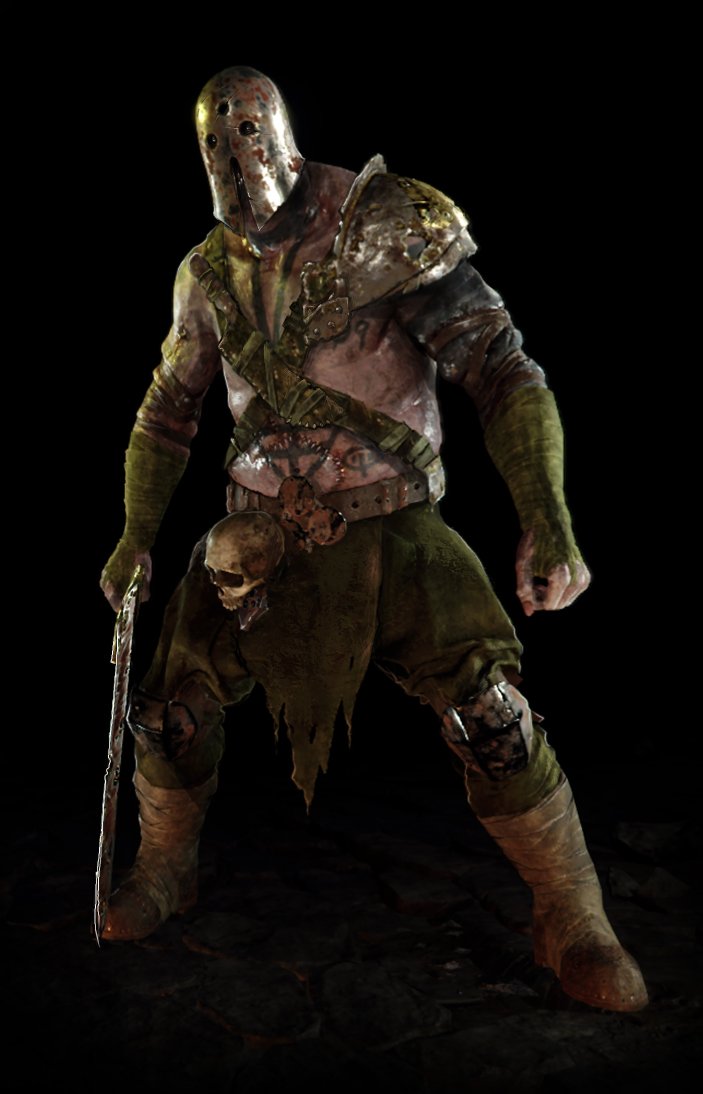

final concept image
ui Mockups
Using Photoshop, I created simple designs and descriptions for the Art Lead to use for reference to create UI Mockups for the White Paper.
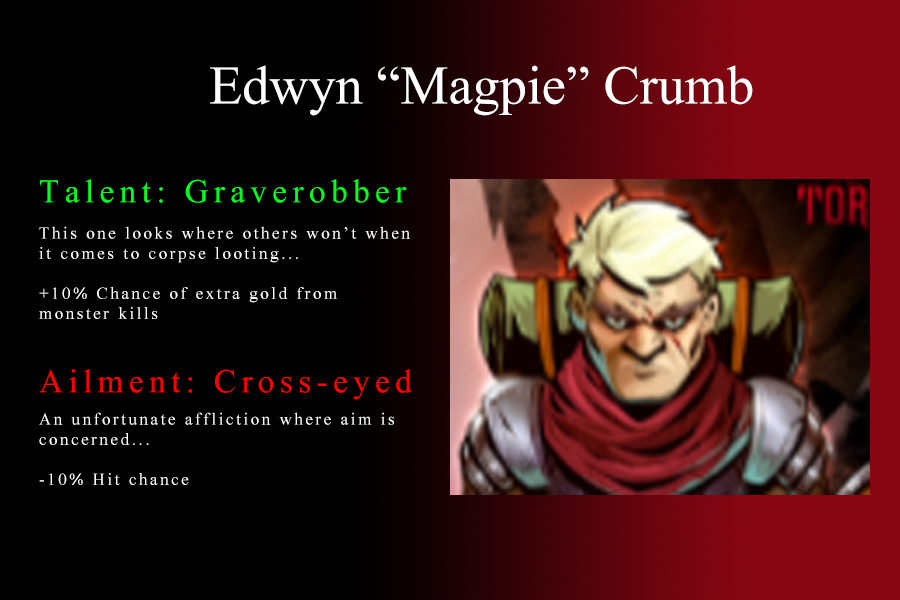
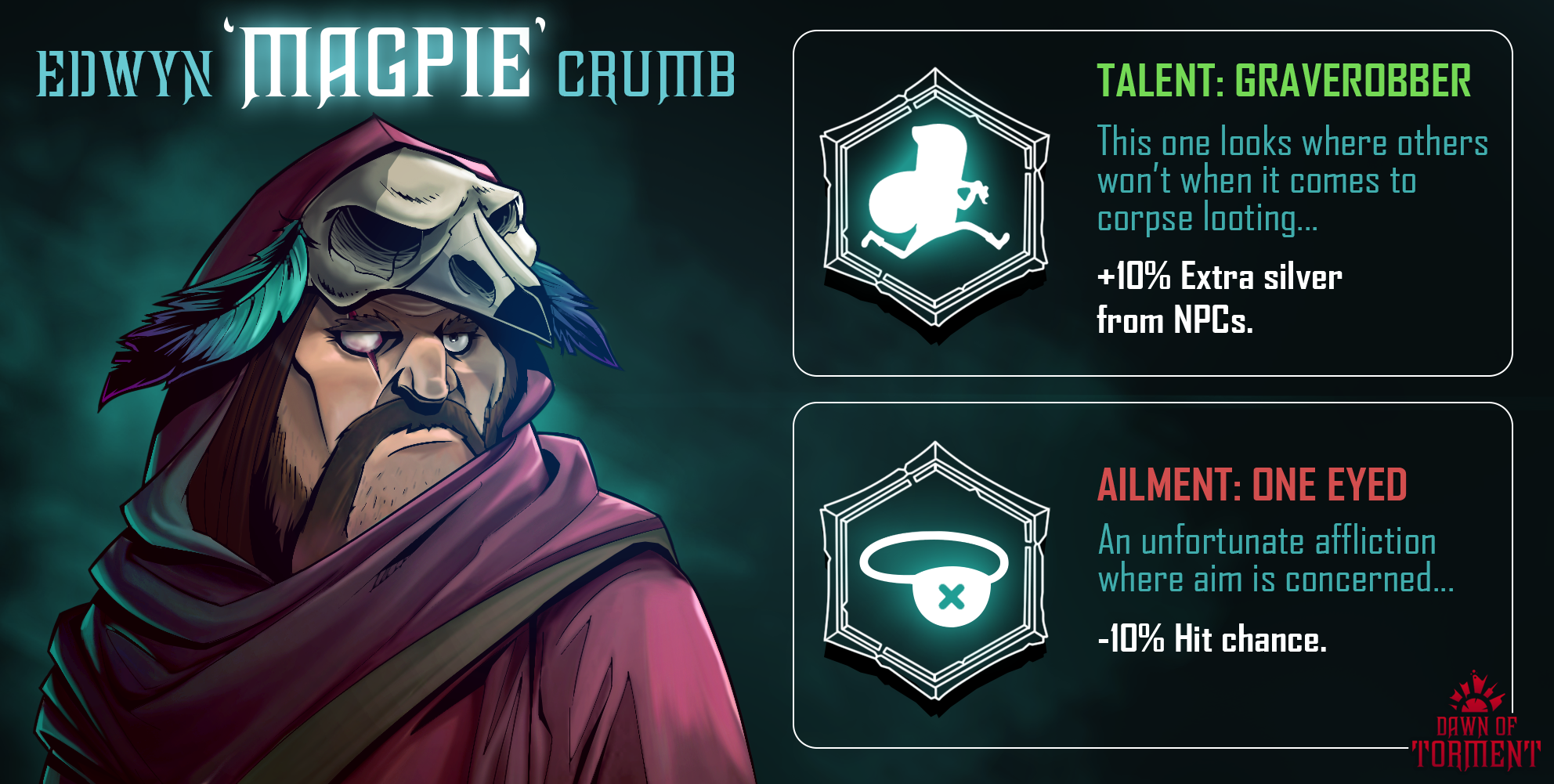
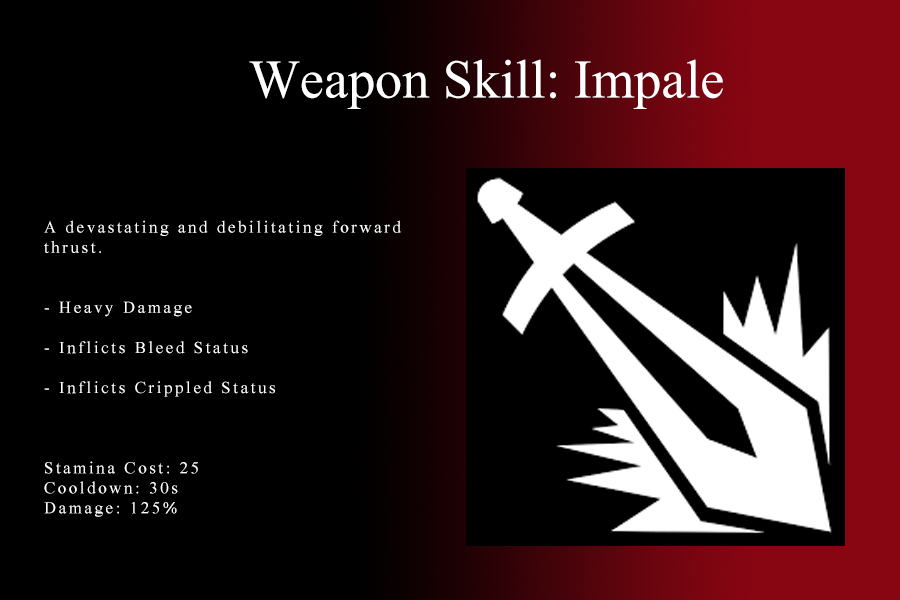
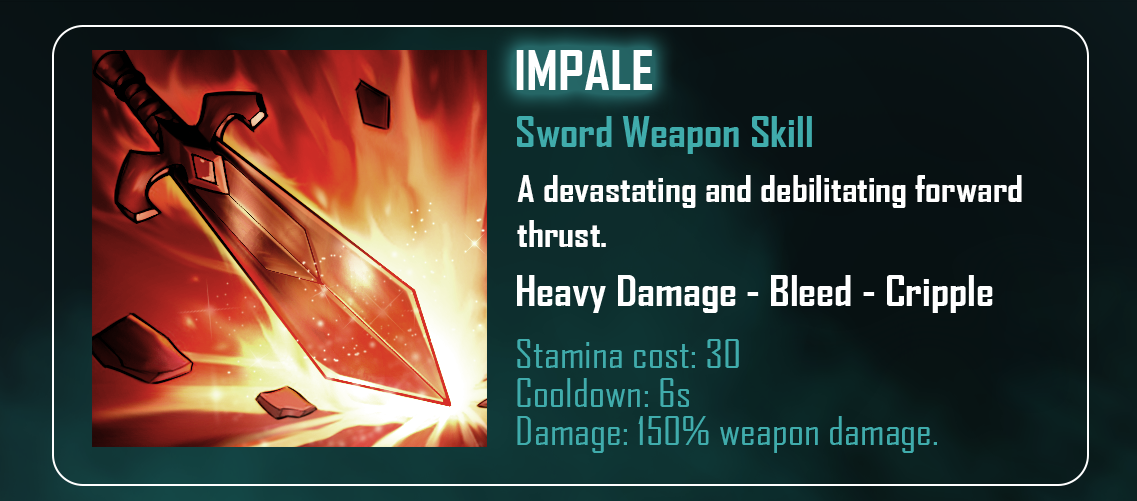
community storytelling
It was important for us to have a strategy in place for how we would connect and engage with potential players. Using the lore I had written for the prologue and worldbuilding, I created concepts for community-driven quests that would take place on our Discord server and Twitter feeds.
The idea behind these would be to build interest and excitement for the IP, and tying these into rewards to retain players and incentivise referrals.
-
We break down specific chunks of time (monthly? bi-monthly?) into “Seasons” before the release of the game. Spread across each season are “Events”, these events would be promoted on Twitter and Discord to grow the community and create brand awareness and when the timing is right/optimal, could also involve staking DOTS in return for in-game rewards (similar to how Crypto Unicorns uses the Dark Forest).
-
In order to incentivise early and continued community support, community members who participate in previous/early seasons/events receive a badge/title that will gain them early access/a reward/advantage in the next event/season.
Example: A member participates in at least 75% of Season 1 events, they’ll be given a badge/title. All members with this badge/title are given 24 hours early access to the next event (in addition to whatever rewards they received from said events).
-
We can use the lore/world building as the basis for our pre-release season (revealing how this world came to be this way) – using mystery and intrigue to build excitement and speculation (while dropping relevant rewards).
A season focused around the time before the fall of Ascendancy. Narrative framing of this is that we are being told the “story of what came before '' (in the form of a journal?) – we could then drip feed entries from this journal at the start, mid and end point of each event - bookending each event with some unique art?
